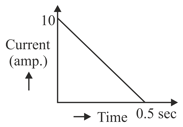Two parallel vertical metallic rails are separated by . They are connected at the two ends by resistance as shown in the figure. A horizontally metallic bar of mass slides without friction, vertically down the rails under the action of gravity. There is a uniform horizontal magnetic field of perpendicular to the plane of the rails, it is observed that when the terminal velocity is attained, the power dissipated in are respectively. Find the terminal velocity of bar & value .
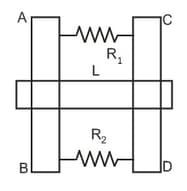
Important Questions on Electromagnetic Induction
A thin strip long is on a shaped wire of negligible resistance and it is connected to a spring of spring constant (see figure). The assembly is kept in a uniform magnetic field of If the strip is pulled from its equilibrium position and released, the number of oscillations it performs before its amplitude decreases by a factor of is . If the mass of the strip is grams, its resistance and air drag negligible, will be close to:
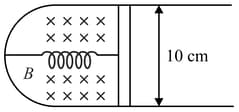
A rod of length slides with a speed of on a rectangular conducting frame as shown in figure. There exists a uniform magnetic field of perpendicular to the plane of the figure. If the resistance of the rod is . The current through the rod is
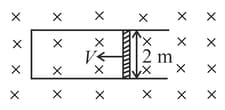
A metallic rod of length is tied to a string of length and made to rotate with angular speed on a horizontal table with one end of the string fixed. If there is a vertical magnetic field B in the region, the e.m.f. induced across the ends of the rod is:
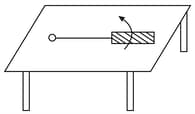
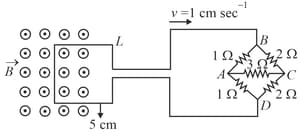
A horizontal rod of length rotates about a vertical axis with a uniform angular velocity . A uniform magnetic field exists parallel to the axis of rotation. Then potential difference between the two ends of the rod is
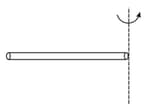
A square frame of side and a long straight wire carrying current are in the plane of the paper. Starting from close to the wire, the frame moves towards the right with a constant speed of (see figure). The e.m.f induced at the time the left arm of the frame is at from the wire is
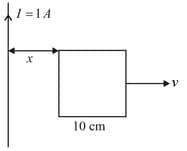

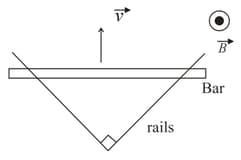
As shown in the figure, a rectangular loop of a conducting wire is moving away with a constant velocity in a perpendicular direction from a very long straight conductor carrying a steady current . When the breadth of the rectangular loop is very small compared to its distance from the straight conductor, how does the emf: induced in the loop vary with time

In a coil of resistance , a current is induced by changing the magnetic flux through it as shown in the figure. The magnitude of change in flux through the coil is:
